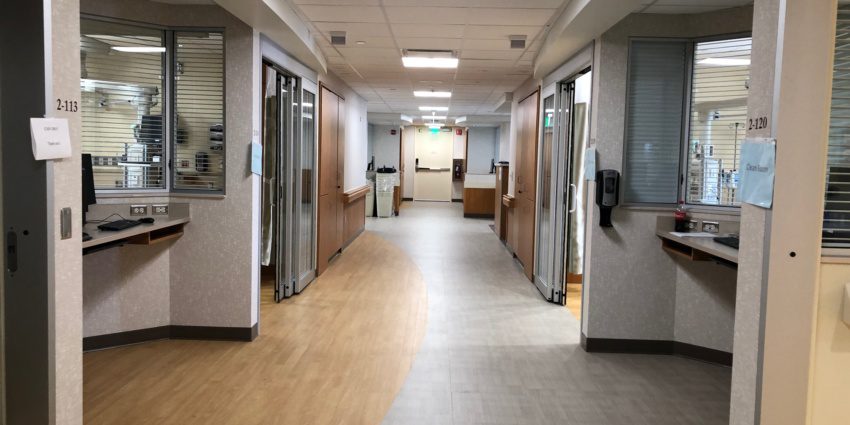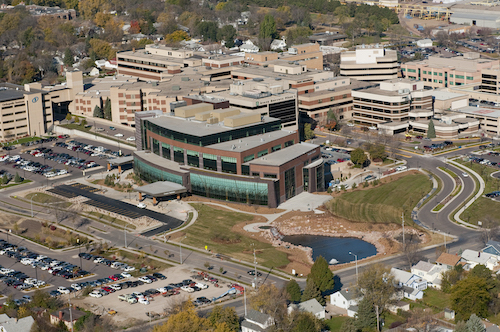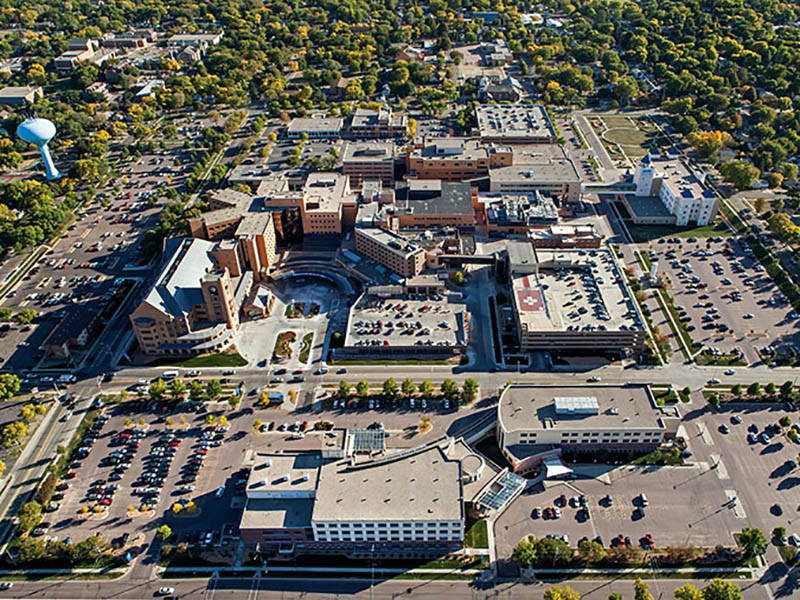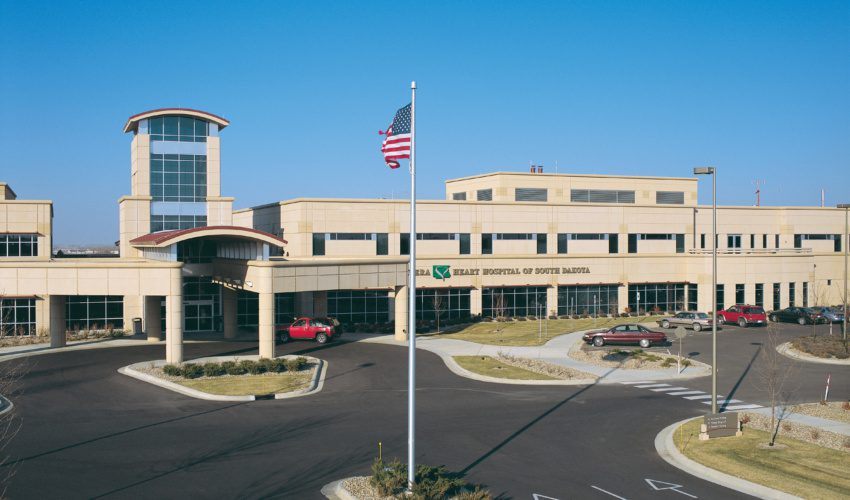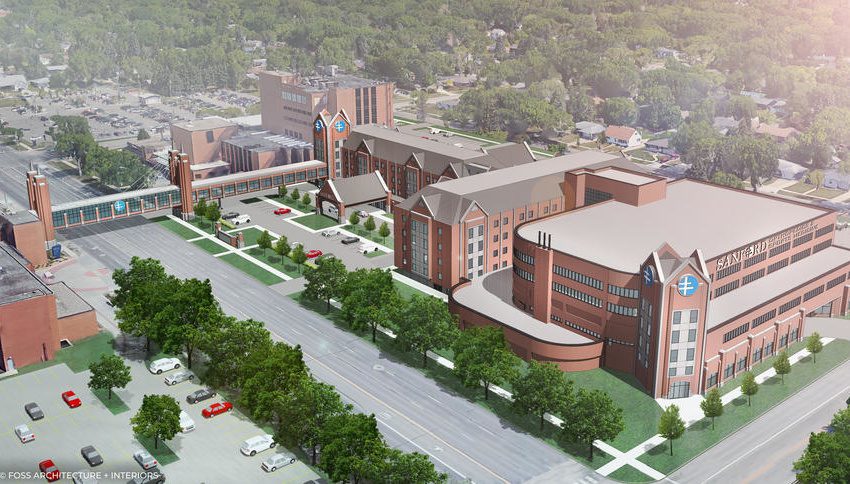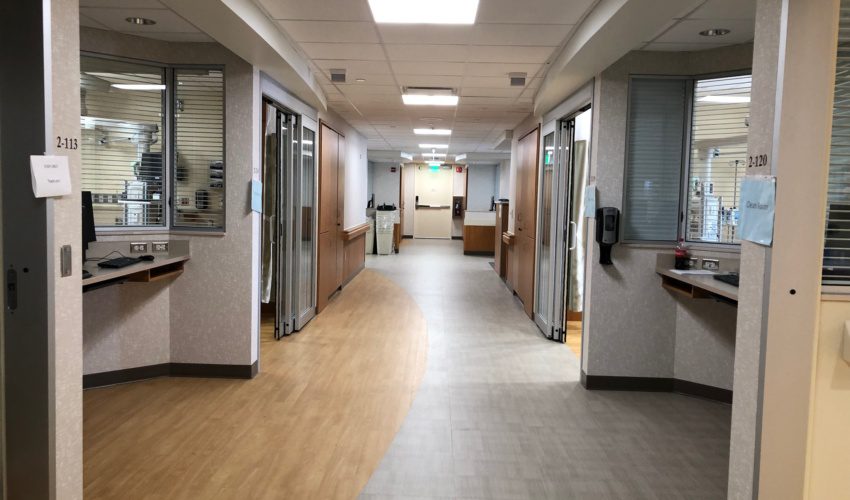Hospitals take rare measures to accommodate surge in patients
Nov. 12, 2020
Sioux Falls hospitals are taking significant steps to open up more ways to care for people and aren’t ruling out more drastic ones, as new COVID-19 cases reached a record high today.
More than 2,000 new positive tests were reported statewide, along with 66 new hospitalizations.
“These are extraordinary times, and we are taking extraordinary measures,” said Dr. David Basel, vice president of clinical quality for Avera Medical Group.
At Avera McKennan, floor beds are being converted to intensive care beds, and in some cases there are two patients per room.
Avera McKennan typically has 28 ICU beds available. There currently are 33 patients in ICU with COVID-19 alone.
“We handle the sickest at McKennan,” Basel said, adding that across the system some clinics have been closed so nurses and physicians can work in hospitals. That has happened on a volunteer basis in Sioux Falls but hasn’t impacted clinic operations at this point.
“I don’t want to scare patients,” Basel said. “If you need care, you need care, and we will find a way, including non-COVID stuff. Only 30 percent of the cases in the hospital are COVID-related; the majority are non-COVID-related.”
At Sanford USD Medical Center, some COVID patients are doubled up in standard rooms. The intensive care unit is typically 75 single rooms. There were 28 COVID-occupied ICU beds reported today.
“We’re incredibly busy,” said Andy Munce, vice president of operations for Sanford USD Medical Center.
“Our COVID population takes up 20 to 25 percent of our total admission population.”
There are about 420 patients in the hospital currently. Sanford is licensed for 545 beds and had a surge plan in the spring as the coronavirus began spreading here to get to 900.
“And clearly we’re not there, but it is different because a lot of other services are open because we learned a delay in care causes a lot of other challenges,” Munce said.
Hundreds of staff members are picking up extra shifts or moving around to help support the patient volume, he said. Nurses are working in teams where experts are helping guide them.
“You can tell everyone is busy, but honestly they’re in very good spirits,” Munce said.
In North Dakota, hospitals received authorization to allow nurses who tested positive for COVID-19 but were asymptomatic to care for COVID patients. That hasn’t been needed in South Dakota yet, but Avera and Sanford aren’t ruling it out.
“It would be a potential step for us to take,” Basel said.
Both systems are trying to care for patients in home settings as they can.
At Avera, “we have 125 patients on oxygen outside the hospital setting, patients seen by visiting nurses and virtual visits. We probably have 500 patients that have some combination of services,” Basel said. “We have a pretty robust monitoring program.”
Both systems also have some patients monitoring their temperature and oxygen level multiple times daily and reporting it back.
“Patients that hit certain risk criteria that make them more high risk to potentially require a hospitalization or more early intervention related to oxygen are enrolled within our home monitoring program,” Munce said.
Sanford also is leveraging its Good Samaritan Society operation as another place to care for patients.
“We have moved patients between acute care and long-term care that would have never happened before this merger,” Good Samaritan president and CEO Randy Bury said.
“It’s just easier to get in the room and say, ‘We have 15 discharges we have to get out of the hospital to make room for others,’ and the people in the room get it. They’re colleagues. We break down those barriers like we never could before. The economics wouldn’t have made sense. Now, the overall economics work, and it’s better care for patients and residents.”

